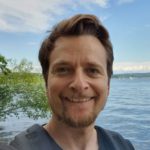This website uses cookies so that we can provide you with the best user experience possible. Cookie information is stored in your browser and performs functions such as recognising you when you return to our website and helping our team to understand which sections of the website you find most interesting and useful.
Alexander Mahnert
at the Institute for Systems Biology
Alexander Mahnert
Former Visiting Scholar
 gibbons.isbscience.org/bio/alexander-mahnert/
gibbons.isbscience.org/bio/alexander-mahnert/
My decision to become a microbiologist arose from a fundamental interest in the limits of life. Archaea were known for their extremophilic character, and so as a young bachelor’s student in molecular biology from Graz (Austria) I reached out to the Archaea Center of the University of Regensburg (Germany). During an internship in 2008 I got to know Prof. Christine Moissl-Eichinger and decided to do my master’s thesis from 2011 to 2012 in Regensburg. Specific lab skills I learned from her (Probst et al., 2012 and Bauermeister et al., 2014), helped to propel me into a formative period at the California Institute of Technology (Caltech) and the NASA Jet Propulsion Laboratory. During my time in Pasadena (CA, USA), I focused primarily on characterizing the microbiome of cleanrooms (Mahnert et al., 2015). This is where I became interested in the interactions between the human microbiome and the built environment. Fortunately, Prof. Gabriele Berg at TU Graz (Austria), wanted to move into this area of research, and took me on as a graduate student. Subsequently, during my PhD thesis on the microbiome of indoor environments, I was able to show that not only humans, but also plants, influence the microbiome of a room (Mahnert et al., 2015, and 2018). Furthermore, we were able to show that antimicrobial resistances at the metagenome level correlated positively with intensified hygiene measures, but negatively with microbial diversity (Mahnert et al., 2019). As a postdoc, I returned to Christine Moissl-Eichinger’s group (now established as a BioTechMed Professor at the Medical University of Graz) to continue my work on the topic of the indoor microbiome, but with a particular focus on the human archaeome. Now, as a University Assistant in Prof. Christine Moissl-Eichinger’s lab, I have established myself as a valuable support and contact person regarding bioinformatics methods at the Medical University of Graz.
At the moment, I’m visiting the Institute for Systems Biology and the Gibbons lab in Seattle to establish new collaborations and joint projects and to add an additional layer of international research experience to my career path.


